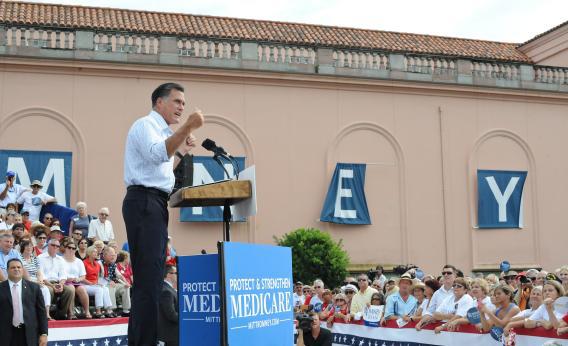Mitt Romney’s held a lot of different political positions over the years and has made a lot of contradictory statements, so naturally we in the press wonder what economic policies would he actually pursue if he wins the election. Is he a closet Keynesian or a true austerian? Would he favor looser money or tighter? Nobody knows. One data point, caught by Matt O’Brien at The Atlantic, is the economic recovery plan he outlined in recorded remarks at a closed-door fundraiser in Florida—win the election and then do nothing, counting on the mere fact of a Republican electoral victory to spark an investment boom.
Watch it (emphasis added):
If it looks like I’m going to win, the markets will be happy. If it looks like the president’s going to win, the markets should not be terribly happy. It depends of course which markets you’re talking about, which types of commodities and so forth, but my own view is that if we win on November 6th, there will be a great deal of optimism about the future of this country. We’ll see capital come back and we’ll see – without actually doing anything – we’ll actually get a boost in the economy.
This is of course pretty self-serving. But it partakes of a pretty widespread misconception about how the economy works and is in some ways a cousin of the “confidence” agenda that Barack Obama mistakenly spent 2010 and 2011 pursuing.
It starts with the accurate observation that a recession largely consists of a drought in investment spending. It continues with the accurate observation that investment decisions are heavily dependent on expectations. If you think there’s going to be a boom, then you as a private individual want to invest a lot and if a lot of people want to invest a lot then there’s going to be a boom. But it goes awry in thinking of this as a psychological phenomenon—confidence—that can either be instilled by signing a bipartisan budget deal (Obama’s version) or by booting any sign of Kenyan Anticolonialism from the White House (Romney’s version).
But that’s not how the world works. Given 2 percent inflation rate targeting, an incipient investment boom would lead to price increases which would lead to higher interest rates which would cut off the boom which is why there won’t be an investment boom.
The relevant issue, in other words, isn’t a psychological one it’s an economic one. At the time Romnney was speaking, expectations were coordinated around a steady-growth equilibrium that implied no catchup growth, no boom, and no rapid diminution of the unemployment rate. Were the Federal Reserve to adopt Charles Evans’ proposal to temporarily raise the inflation ceiling to 3 percent, then we’d have a different story on our hands. Narayana Kocherlakota’s more modest plan for a 2.25 percent inflation ceiling would have a more modest effect. QE 3 as been announced in a less clear way than either the Evans or Kocherlakota versions of monetary stimulus (perhaps because FOMC members can’t reach consensus) but should generate a modestly stimulative effect for similar reasons.
The point, however, is that it takes real policy steps to address the demand crisis. You can’t just hope for the best.
